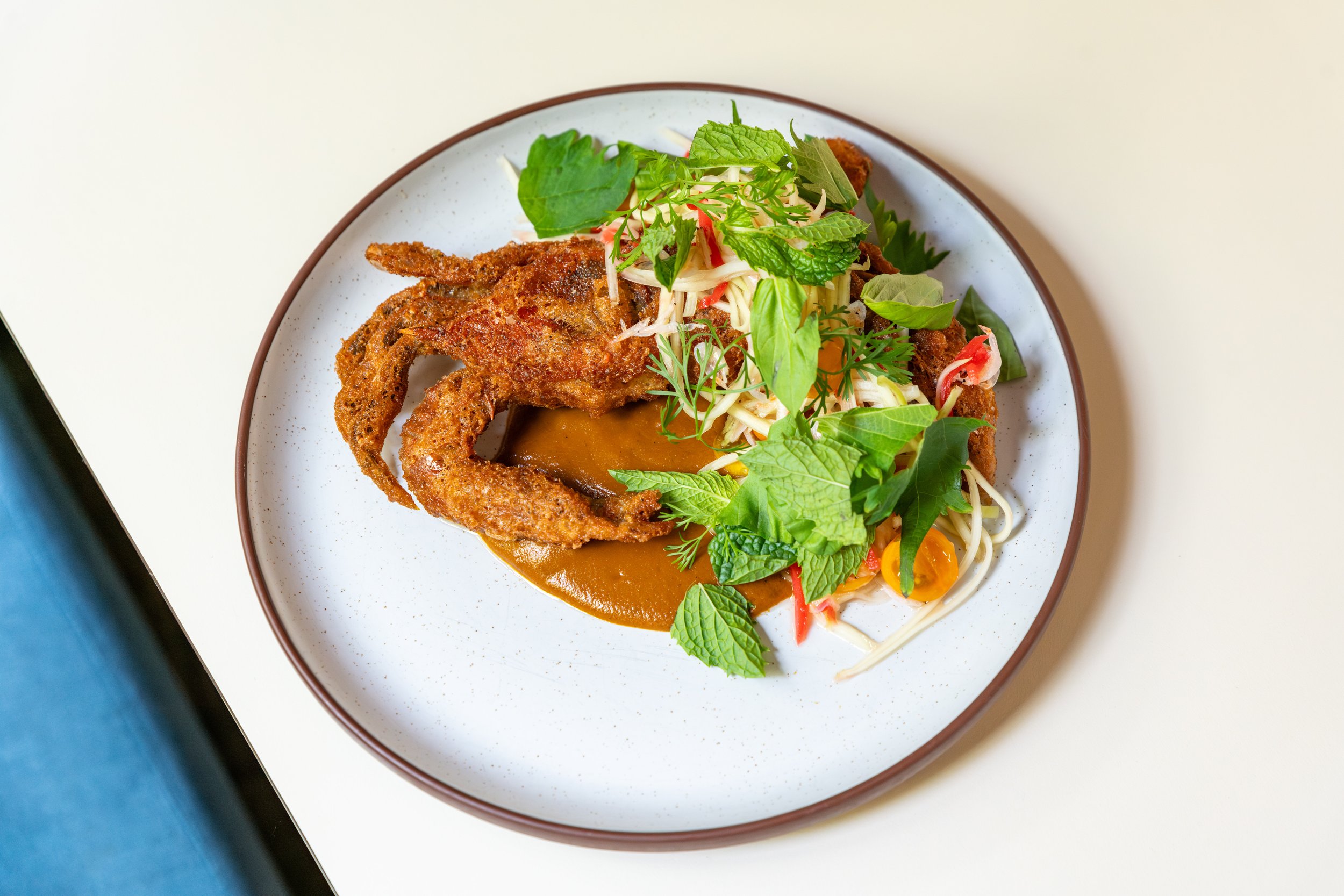New York Kitchen Notebook
An in-depth look at some of our favorite dishes and cocktails from our time on the ground in New York City.
photo: will blunt
SCRAP IT ALL
Da Toscano Chef de Cuisine William Tuggle fiddled with a lobster recipe for days, but it just wasn’t coming together. The lobster component, which Tuggle thought would be the easiest, seemed forced. Feeling defeated, he looked down at his empty lobster shells and remembered the goldmine sitting in his freezer: three months’ worth of seafood shells and scraps that he had hoarded during quarantine. So Tuggle threw the shells — mostly composed of lobster and carabineros shrimp — into a pot and simmered them into sugo. He serves it beneath the layers and layers of a celery root millefeuille. As the celery root is pressed and seared, it exchanges its sweetness for a deep savoriness. But Tuggle adds that sweetness right back in with celery root cream and macerated Granny Smith apples. So Tuggle did make a lobster dish — it was just a little scrappier than he expected.
FAT CHANCE
When a corzetti dish at Kindred left the kitchen with 19 quarts of ‘nduja, head Bartender Charlotte Mirzoeff had a savory, smoky idea. For the Daisy Verde cocktail (“margarita” means “daisy” in Spanish), she renders the pork, reserving its juices to fat wash with mezcal in glass jars. To replace the lime that would normally accent a margarita, she makes an acid-adjusted celery juice with a centrifuge juicer. Mirzoeff says, “By adjusting the acid of the celery juice, the drink stays balanced without watering down the desired flavor.” The juice then gets mixed with Giffard Pineapple, simple syrup, and saline solution (Mirzoeff believes that the most underappreciated ingredient in cocktails is salt). She has tried variations with coconut oil, olive oil, chicken fat, and bacon fat, but some chile must be added to replicate the ‘nduja’s spicy finish.
photo: will blunt
photo: will blunt
THE CORN DUMPLING CURE
When all goes to hell, we lean on the foods that evoke a sense of nostalgia and sweet childhood memories. At Mokyo, Chef Kyungmin Kay Hyun’s small plates channel just that. Hyun seamlessly blends her Korean heritage with playful, globally inspired flavors. Take her dumplings. The delicate, steamed dumpling wrapper is reminiscent of a ravioli, stuffed with corn that’s smoke in grits and mixed with heavy cream. “This idea comes from elote,” says Hyun. “I love Mexican food, so I made my own version of a dumpling with a Mexican feel.” It’s treated with a drizzle of truffle oil and a punchy salsa verde, balancing out the dumpling’s oh-so-rich stickiness. It’s all tied together with freshly shaved fennel and parmesan. One bite will send any diner back to eating elotes with a face smothered in juicy, grilled corn, crema, and queso fresco.
DOWN BY THE BOARDWALK
Mirchi pakora might be an Indian street food staple, but there’s something so very Nathan’s-corn-dog-at-the-Coney Island-boardwalk-on-the-fourth-of-July about Rahi Chef Eric Valdez’s version. Let us explain: Although the fried-chickpea flour crust is fairly traditional, Valdez’s stuffing swaps out the typical potatoes, onions, and chaat masala for chanterelle mushrooms coated in amul cheese (essentially the American cheese of India: highly processed and often served in a can). Valdez balances the dish with a tamarind-date chutney, spicy mayo, and crispy shoestring potatoes. Unlike a corndog, it’s best that this pepper is not served on a stick because as soon as you cut it open, the melty cheese oozes out and mingles with the chutney and mayo. The dish becomes sweet, salty, spicy, and indulgent in the best possible way.
Full Recipe: Mirchi Pakora
photo: jaclyn warren










